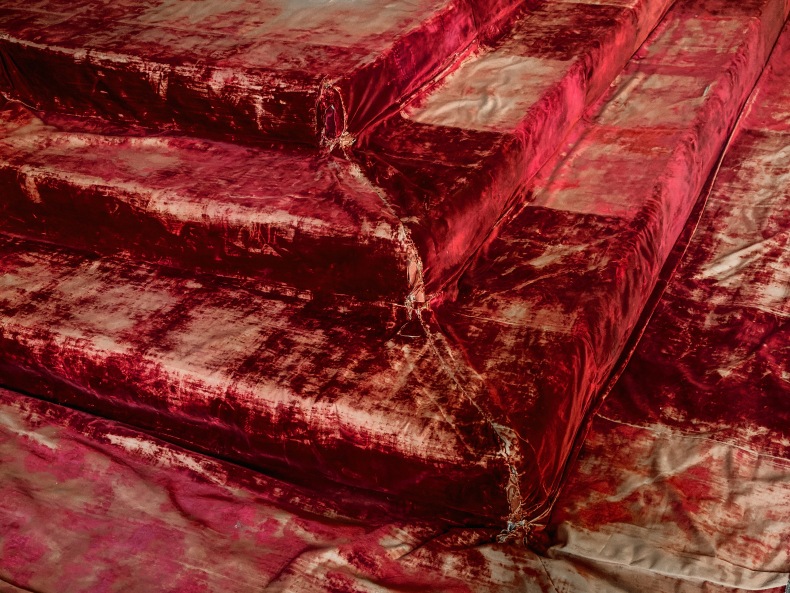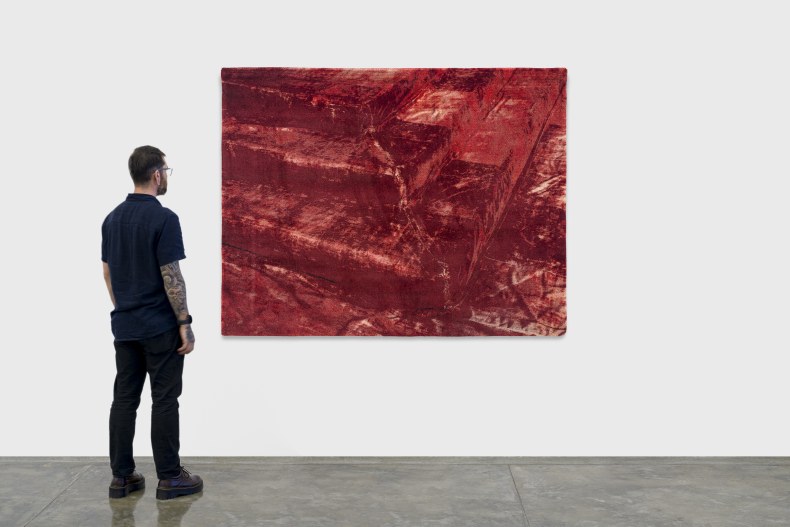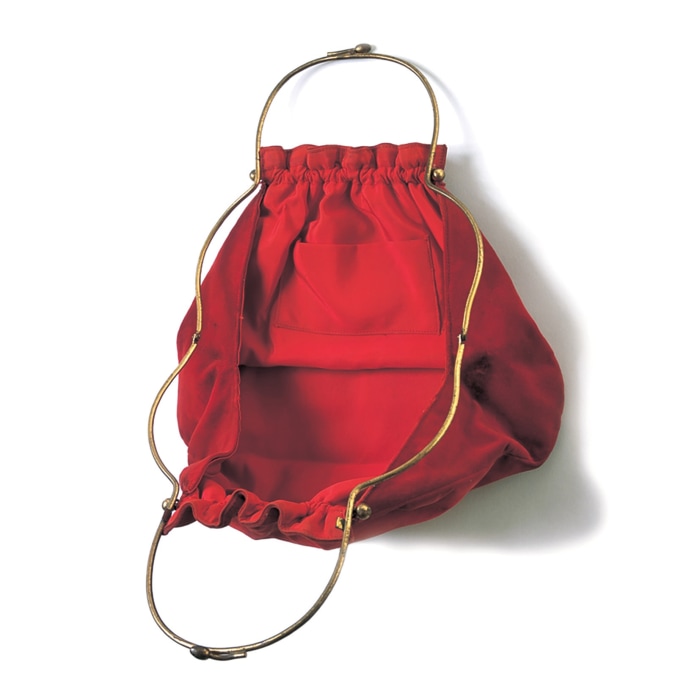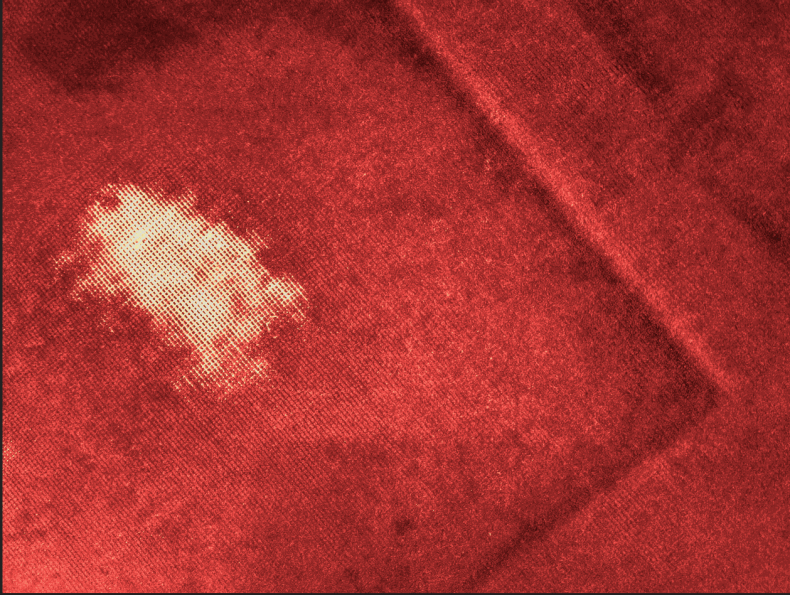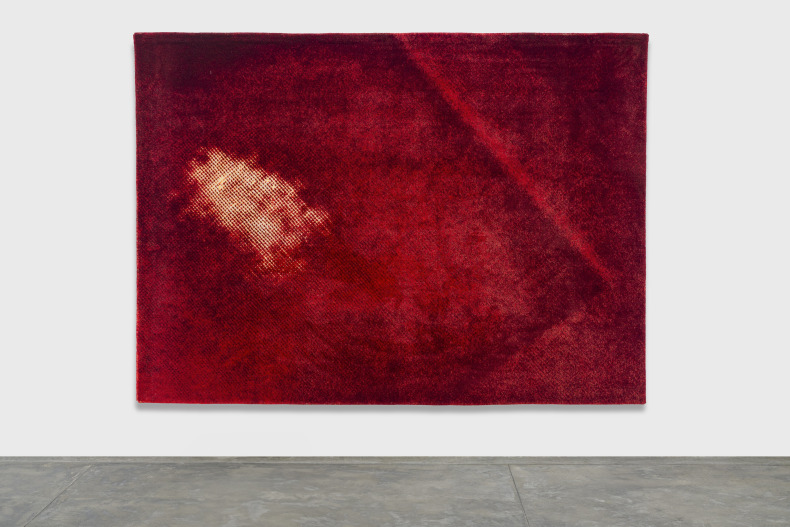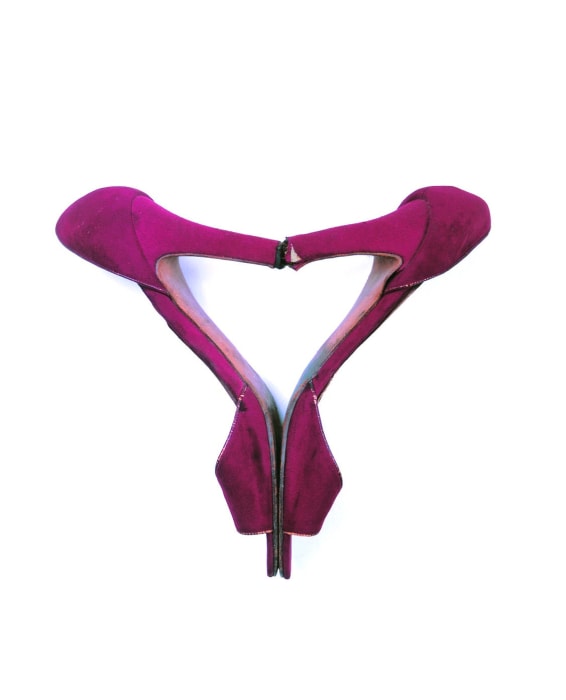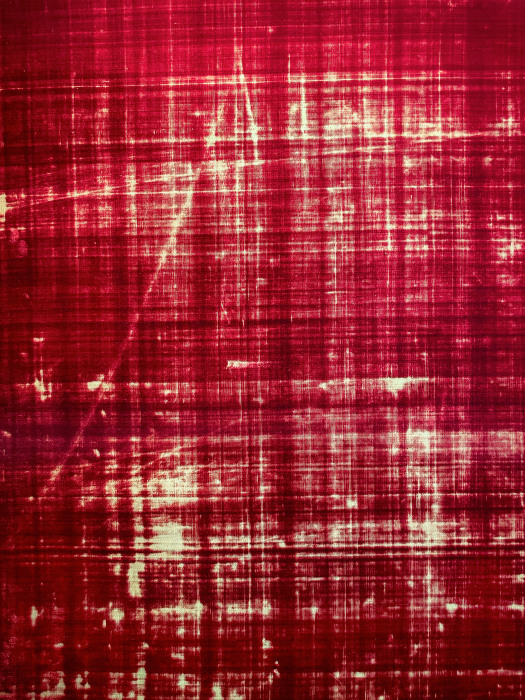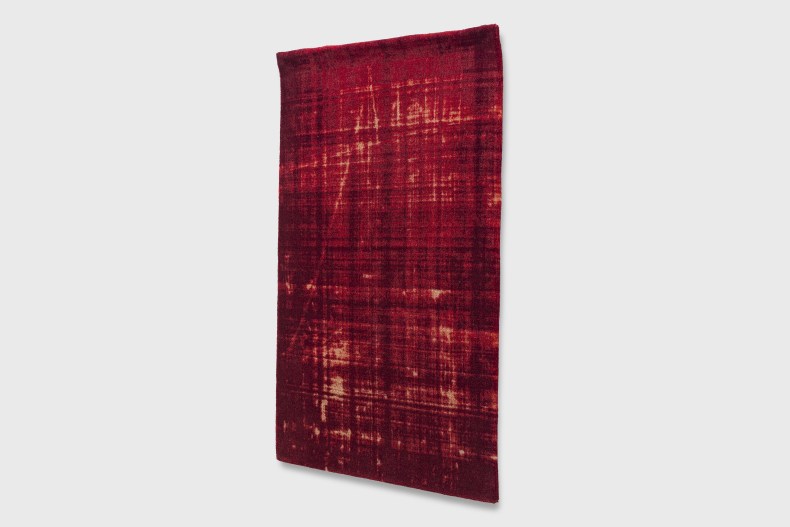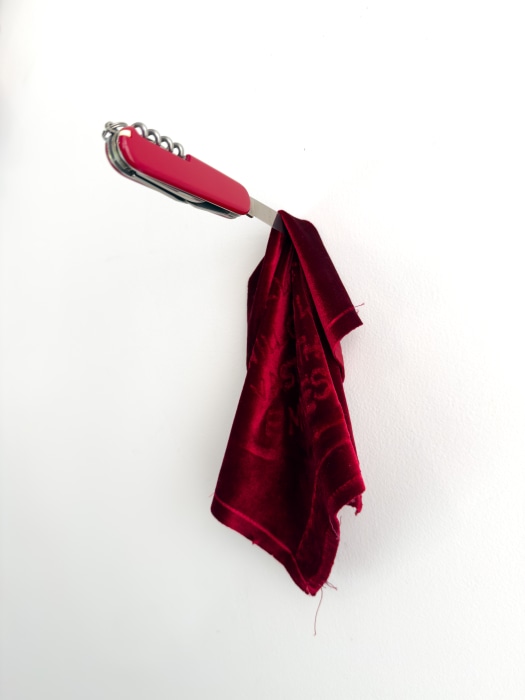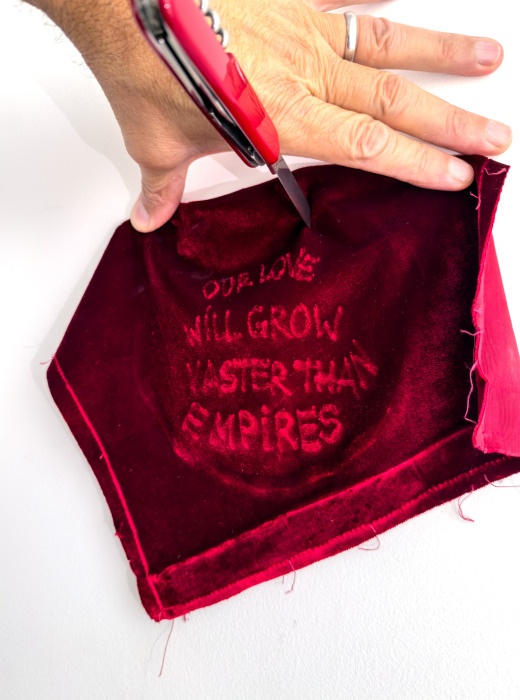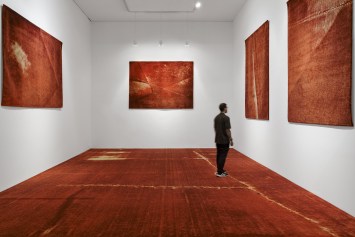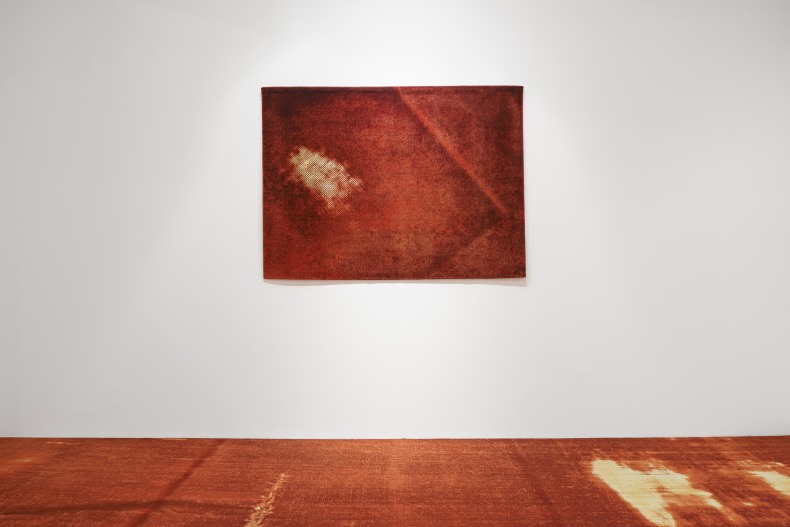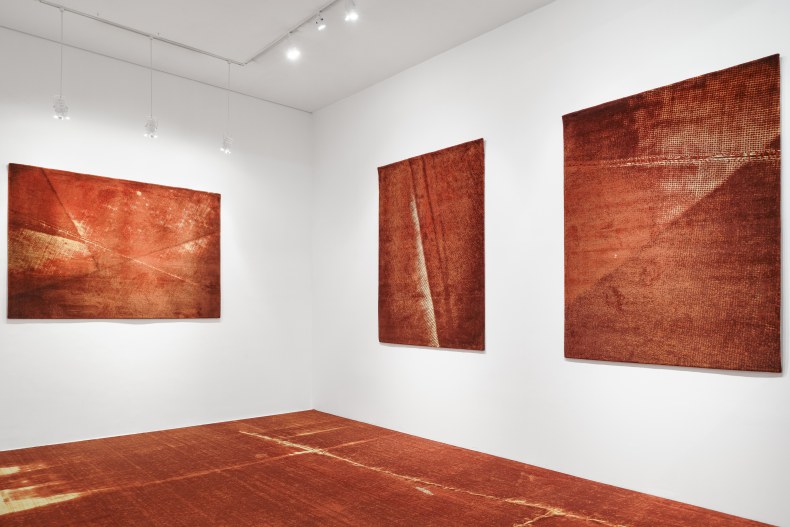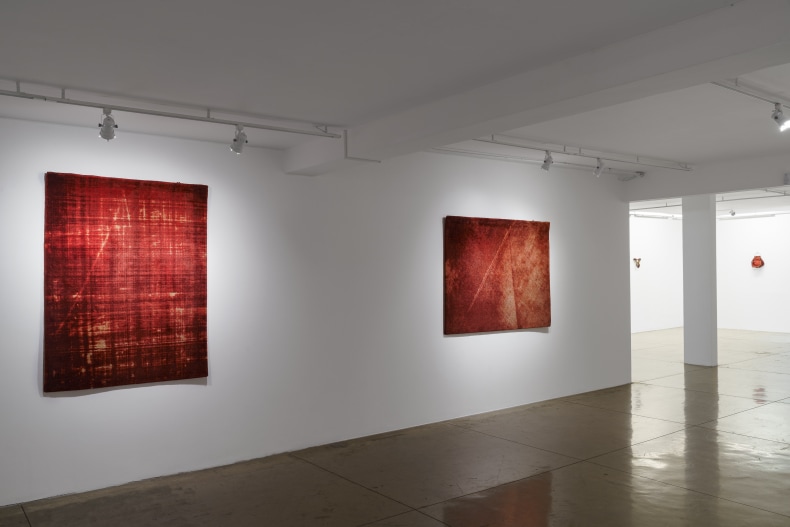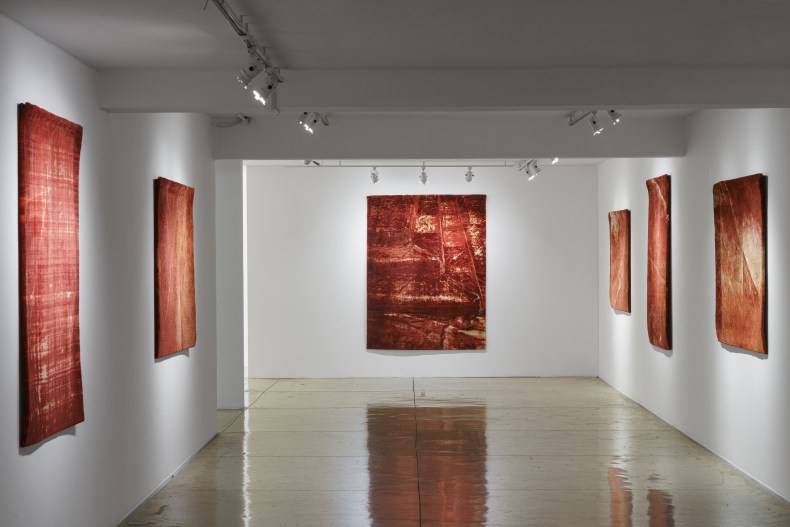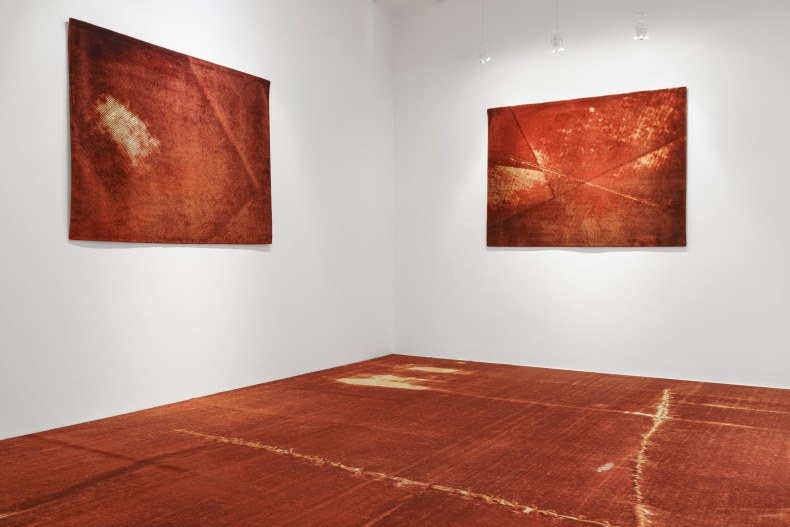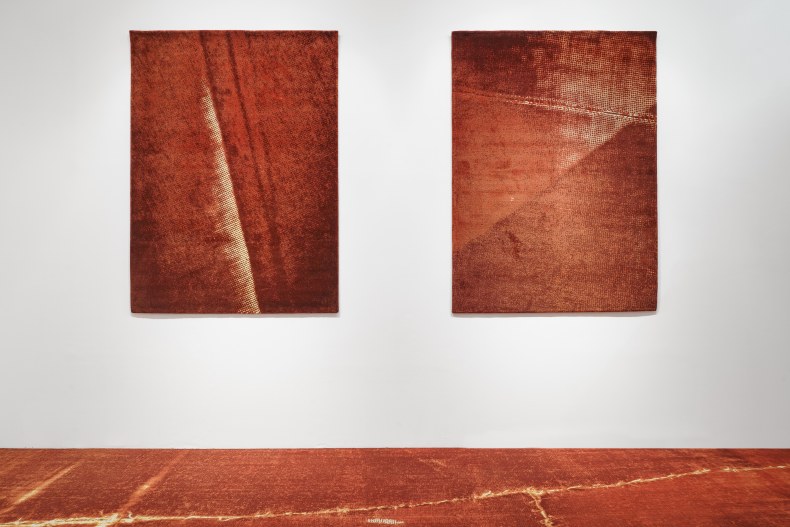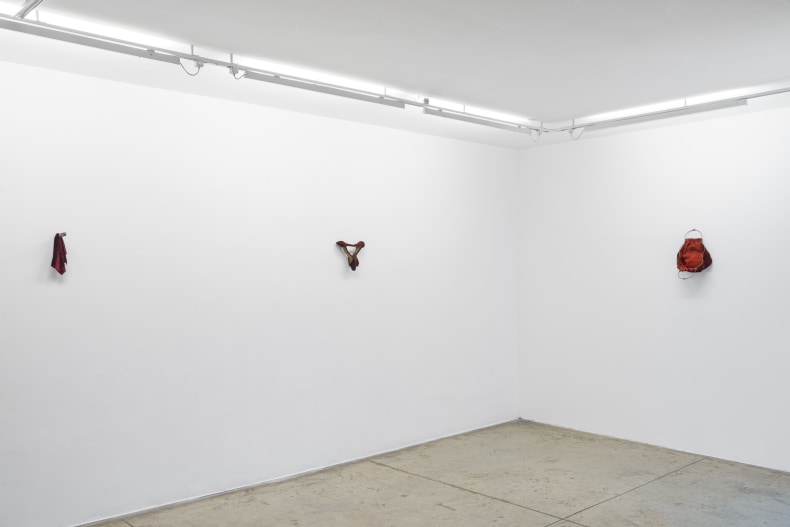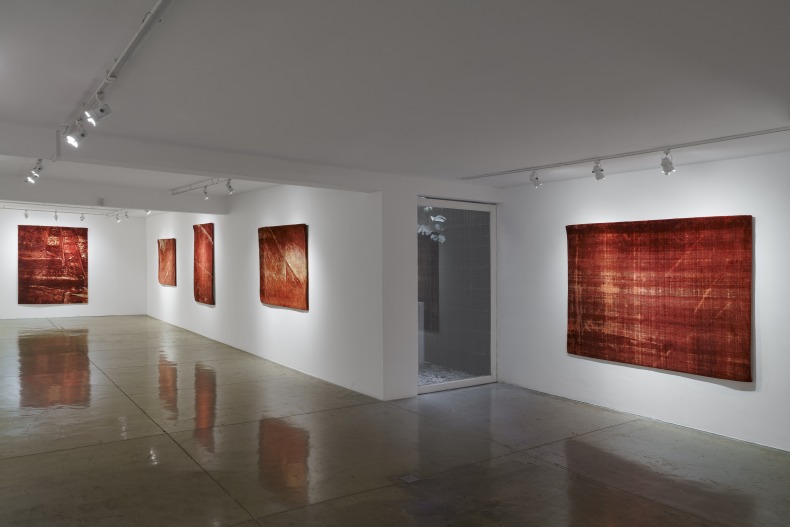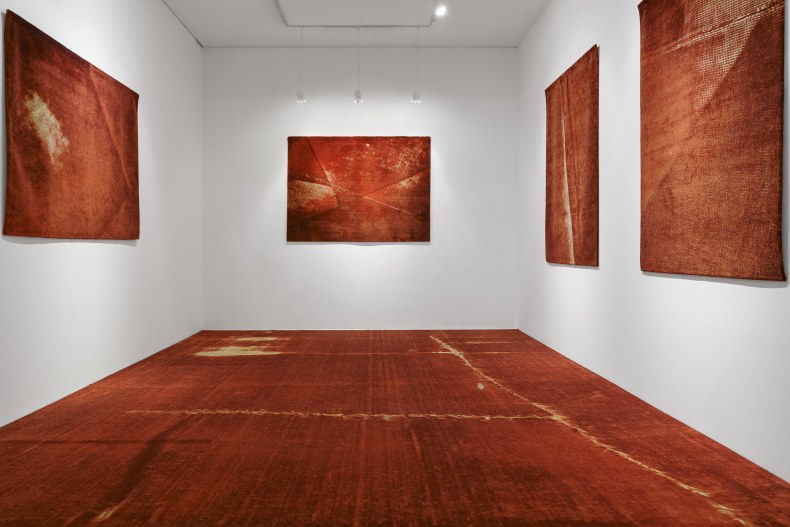Nara Roesler São Paulo is pleased to present Blue Blood, a solo exhibition by Marcos Chaves (b. 1961, Rio de Janeiro), featuring new tapestry works alongside three objects, two of which date back to the 1990s. The exhibition builds upon an intervention the artist carried out in 2013 at the Eva Klabin Foundation in Rio de Janeiro, where Chaves presented rugs that were photographic replicas of fabric details from the foundation’s collection.
In Blue Blood, Chaves displays the new red-toned tapestries on the walls—works that reproduce photographs taken by the artist of carpeted floors in historic European locations such as Palazzo Doria Pamphilij, built in 16th-century Rome; the staircase leading to Napoleon Bonaparte’s (1769–1821) only surviving throne, at the Château de Fontainebleau in France, which dates back to the early 12th century and served as a residence for French royalty; and the Opéra Garnier, designed during the reign of Napoleon III (1808–1873), the thirteenth palace to house the Paris Opera, founded by Louis XIV. On the floor of one of the gallery’s rooms, the artist will cover the entire surface with a large-scale version of the rug that initiated this research in 2013.
“I’m really drawn to the idea of gradient—of a color fading—and also to its French meaning: dégradé, something worn, decayed. Over time, you can see the many layers in these European carpets: the weave becomes prominent, forming a kind of grid. You also see the marks left by weight on the floor where the carpet lies, forming low-relief patterns. That sense of wear and the geometry that emerges are what I like about this work, which ends up being almost an homage to painting—as if I were painting with photography and the carpet’s pile,” says Marcos Chaves. Some works create a reversed perspective, like Fontainebleau I and II, which depict the steps leading up to Napoleon’s throne.
The show also includes three object-based works—also in red—one of which is a new piece titled MessAge 2, featuring a Swiss army knife that pins a piece of velvet to the wall, embroidered with the phrase “Our love will grow vaster than empires,” by English poet Andrew Marvell (1621–1678). The other two are readymades from 1992: Jaws, a handbag; and an untitled pair of high heels arranged to resemble either a heart or a fallopian tube.
Ginevra Bria, curator and author of the exhibition’s critical text, emphasizes that “Blue Blood interlaces photography, installation, and sculpture.” She continues, “Photography serves as the exhibition’s backbone, borrowing titles from the contradictions inherent to noble supremacy, politics, and historically strategic unions—referencing power sites such as Fontainebleau, Pamphilij, and Garnier.”
In Blue Blood, Chaves does not aim to attribute symbolic value to materials, forms, or colors; in his work, these elements gain a language of their own. Bria further notes that “between the slow fading of vertical and horizontal dimensions, each represented or enlarged element is hypostatized in a temporal movement, while the noble dynamism of reds is timeless. And ennobled.”
